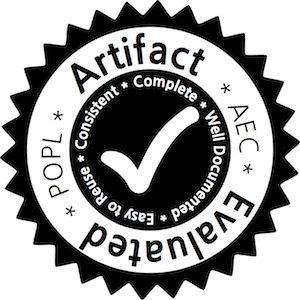Deep Specifications and Certified Abstraction Layers
Last modified: Sun Jun 26 02:08:36 2016 GMT.

Authors
Ronghui GuJérémie Koenig
Tahina Ramananandro
Zhong Shao
Newman Wu
Shu-Chun Weng
Haozhong Zhang
Yu Guo
Abstract
Modern computer systems consist of a multitude of abstraction layers (e.g., OS kernels, hypervisors, device drivers, network protocols), each of which defines an interface that hides the implementation details of a particular set of functionality. Client programs built on top of each layer can be understood solely based on the interface, independent of the layer implementation. Despite their obvious importance, abstraction layers have mostly been treated as a system concept; they have almost never been formally specified or verified. This makes it difficult to establish strong correctness properties, and to scale program verification across multiple layers.In this paper, we present a novel language-based account of abstraction layers and show that they correspond to a strong form of abstraction over a particularly rich class of specifications which we call deep specifications. Just as data abstraction in typed functional languages leads to the important representation independence property, abstraction over deep specification is characterized by an important implementation independence property: any two implementations of the same deep specification must have contextually equivalent behaviors. We present a new layer calculus showing how to formally specify, program, verify, and compose abstraction layers. We show how to instantiate the layer calculus in realistic programming languages such as C and assembly, and how to adapt the CompCert verified compiler to compile certified C layers such that they can be linked with assembly layers. Using these new languages and tools, we have successfully developed multiple certified OS kernels in the Coq proof assistant, the most realistic of which consists of 37 abstraction layers, took less than one person year to develop, and can boot a version of Linux as a guest.